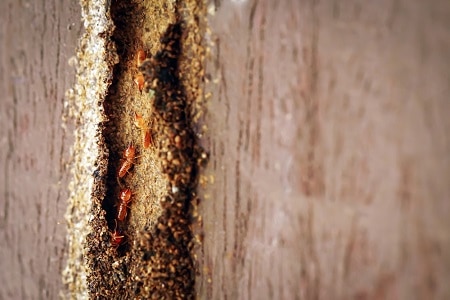Termite Problems in Southern California
 California may be an aspirational place to live for people from the other parts of the U.S. and even the rest of the world, but no paradise is perfect. One problem that homeowners in California face is the risk of termite infestation. Termite Infestation Probability Zones (TIPZs) are based on the termite infestation probability map developed by the U.S. Forest Service and it is used to determine the risk of infestation in a geographical region. According to TIPZs, Southern and Central California (about 90% of the state) are located in Zone 1 which fall under heavy to moderate risk. In other words, there is a significant and serious danger of termite infestation.
California may be an aspirational place to live for people from the other parts of the U.S. and even the rest of the world, but no paradise is perfect. One problem that homeowners in California face is the risk of termite infestation. Termite Infestation Probability Zones (TIPZs) are based on the termite infestation probability map developed by the U.S. Forest Service and it is used to determine the risk of infestation in a geographical region. According to TIPZs, Southern and Central California (about 90% of the state) are located in Zone 1 which fall under heavy to moderate risk. In other words, there is a significant and serious danger of termite infestation.
The Types of Termites
4 types of termites are found in Southern California.
- Subterranean termites
- Drywood termites
- Dampwood termites
- Formosan termites
While these 4 species of termites are different in appearance and the way they infest a house, what is important for the homeowner is the fact that they are all equally dangerous in terms of the damage they can do to both the structure and the items inside it.
High Risk Seasons
It is generally assumed that termites swarm in hot and humid conditions. This generalization is correct, but each species of termite has its own swarming habit.
- Subterranean termites swarm in rainy weather during autumn, winter and spring.
- Drywood termites swarm between July and September. The arid land subspecies swarms during the day and the desert subspecies swarms at night.
- Dampwood termites usually swarm around sunset between August and October.
- Formosan termites swarm in the evenings on humid days in the late spring and early summer.
How Big Is the Risk?
It is estimated that termites damage about 600,000 homes in the U.S. every year. The average cost of repair is in the range of $3,000 per home. The overall cost of repairing termite damage in the country is approximately $5 billion a year. The cost of termite damage repair is enough to ruin a family’s finances and in very serious cases, affect the future. Even those who are lucky enough to have a homeowner’s insurance that covers termite damage still find that they have to pay a significant amount from their own pockets to cover the cost of repairs. For those without insurance that covers termite damage, the financial impact is even more severe. One thing to keep in mind is that repairing termite damage does not mean protection from another infestation in the future. Termites will go wherever there is food for them, even if they have been in the structure before.
Prevention of Termites
The only way to keep a home safe and avoid the pain, hassle and high cost of termite damage repair is to protect the house from an infestation. The internet is full of DIY methods of termite control, all of which promise to be very effective. The problem is that they never live up to their promises. An infestation may be avoided for a few months, but the termites will return and a homeowner, feeling that the home is secure because of the DIY efforts done earlier, may not notice the damage until the situation has become serious. The repair bills could be huge.
For those living in California, especially in the Southern part of the state, the only way to effectively keep a home safe from termite infestation and the resulting damage is to approach a professional termite control company to apply one of the termite prevention methods that experts have access to and know how to use. The benefits, in terms of peace of mind and protection from massive repair costs, make this the only viable option.
- Jul 29, 2022
